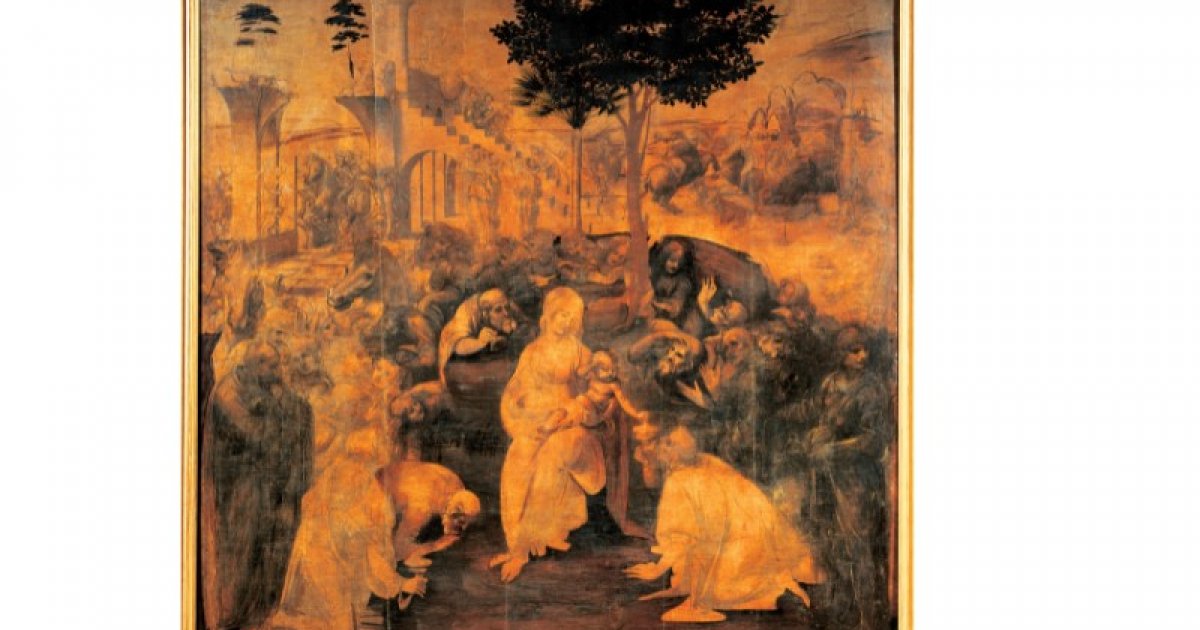UFFIZI, Leonardo-The Adoration Of The Magi_Room A35
 Language: English / USA
Language: English / USA
The painting you are looking at, as you can guess, is an unfinished work. The Adoration of the Magi, in fact, commissioned to Leonardo in 1481 by the monks of a Florentine convent, with the commitment to finish it within 30 months, was not completed because the artist left Florence to move to Milan.
Moreover, this is not the only work that Leonardo did not finish, accustomed as he was to always be pursuing new ideas and transformations for his paintings, which he kept changing. But its very incompleteness allows you to understand the evolution of his work, almost as if it were a large sketch.
After having made at least two preparatory drawings, the master first proceeded to prepare the support, which consisted of a plank of poplar wood to which he applied a layer of plaster mixed with glue and plant fibers. Then, after a few more passes, he drew a charcoal sketch and went over it with brown ink.
But new ideas took shape during the work. For example, at the top right, if you sharpen your eyesight, you can make out the outline of a small elephant, which Leonardo then partially covered to paint rocks. Just below are four horse heads in different positions, as if the master was trying to choose the one that seemed most appropriate to the context.
In addition to this, in the painting you can see a revolutionary interpretation of the theme of the Adoration of the Magi, such as the abolition of traditional details such as the hut where the Nativity was usually set, and the depiction of an animated scene in which you struggle to understand just how many Magi there are!
But every detail has a precise meaning. The ruined temple in the background, being rebuilt, symbolizes rebirth: on the side ramps are sketched laborers at work and on the right, at the foot of the staircase, the man in the back with the hat is probably the construction manager. The trees depicted are palms, the symbol of Christ's martyrdom, and a laurel, the symbol of immortality through resurrection.
Here's an interesting fact: In 2011, the painting was restored in Florence in the workshops of the Opificio delle Pietre Dure – literally the workshop of semi-precious stones – which is one of the most internationally accredited institutes for the restoration of works of art. It traces its roots back to 1588 when, in the former convent of San Nicolò, which is still the headquarters today, a center specialized in the production of works created with inlays of semi-precious stones was established.



